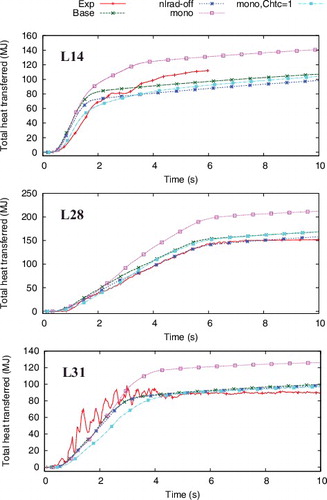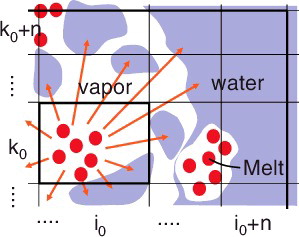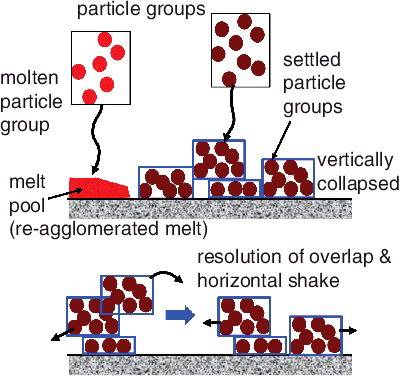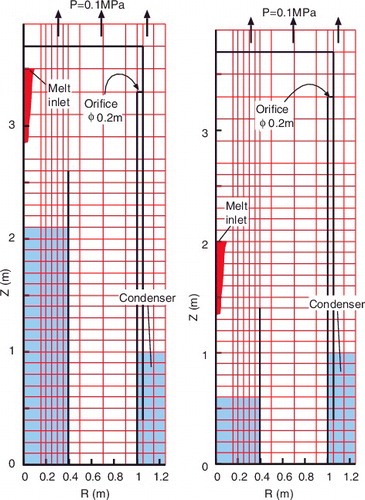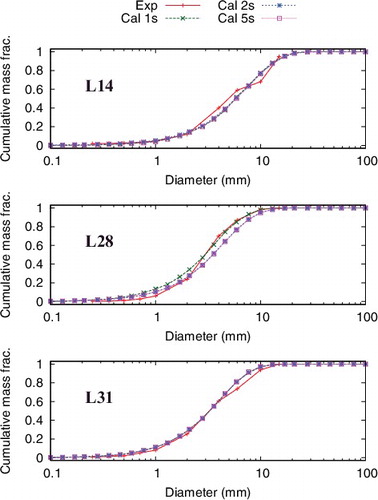Figures & data
Figure 1. Modeling of melt jet breakup in JASMINE code [Citation9].
![Figure 1. Modeling of melt jet breakup in JASMINE code [Citation9].](/cms/asset/ce0d4a80-da67-4706-8ae8-9df7099705c5/tnst_a_1146636_f0001_oc.jpg)
Table 1. Summary of conditions and results of selected ALPHA/GPM experiments [Citation12].
Table 2. Physical properties of the melt material used in the simulation [Citation3,Citation12,Citation28,Citation29].
Table 3. Model parameters in JASMINE code relevant to the present work.
Figure 5. Snapshots of GPM10 (ZAO, subcool) simulation, base case (time 1.5, 3, 7, and 12 s) (red/black dots are molten/frozen particles).
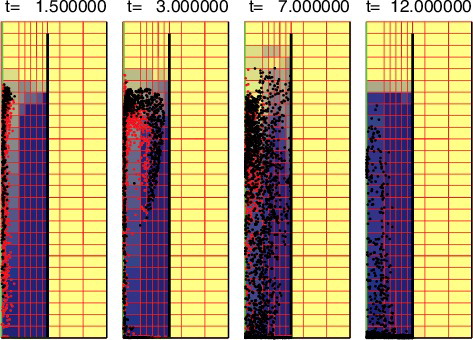
Figure 6. GPM10 (ZAO, subcool): comparison with experimental data on melt jet leading edge progress (a), water temperature (b), and containment pressure (c).
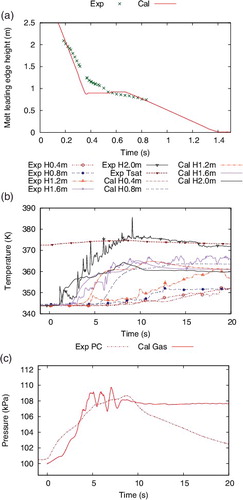
Figure 7. GPM10 (ZAO, subcool): sensitivity of model parameters on the re-agglomerate fraction (a) and heat transfer to water (b).
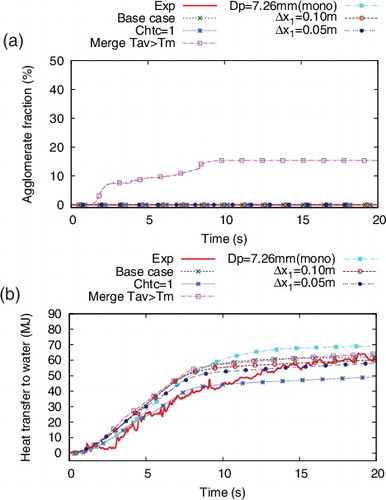
Figure 8. Snapshots of GPM05 (ZAO, shallow pool) simulation, base case (time 1.5, 3, 7, and 12 s) (red/black dots are molten/frozen particles).
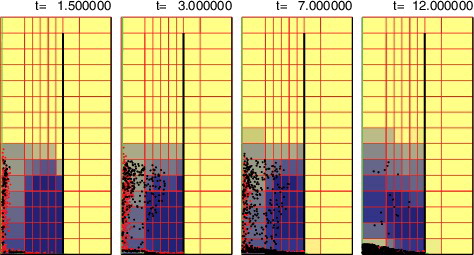
Figure 9. GPM05 (ZAO, shallow pool): sensitivity of model parameters on the re-agglomerate fraction (a) and heat transfer to water (b).
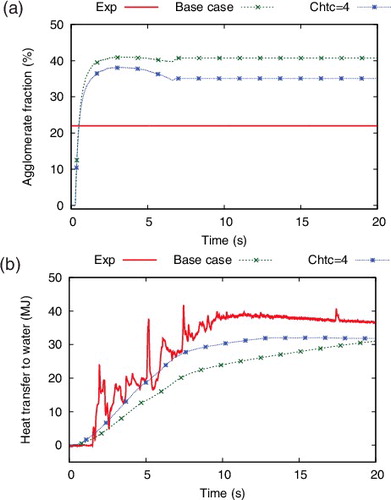
Figure 10. Snapshots of GPM12 (ZAO, saturation) simulation, Chtc = 4 (time 1.5, 3, 7, and 12 s) (red/black dots are molten/frozen particles).
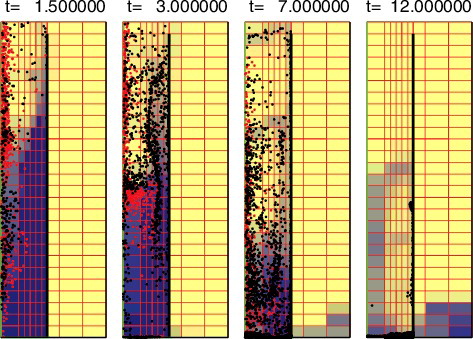
Figure 11. GPM12 (ZAO, saturation): sensitivity of model parameters on the re-agglomerate fraction (a) and heat transfer to water (b).
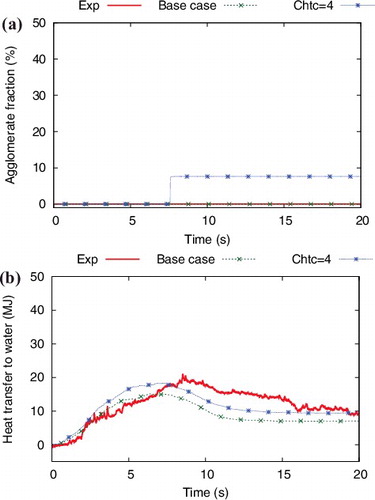
Figure 12. GPM09 (SUS, subcool): sensitivity of model parameters on the re-agglomerate fraction (a) and heat transfer to water (b).
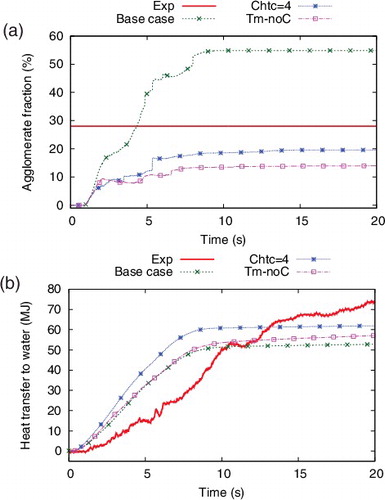
Figure 13. GPM08 (SUS, saturation): sensitivity of model parameters on the re-agglomerate fraction (a) and heat transfer to water (b).
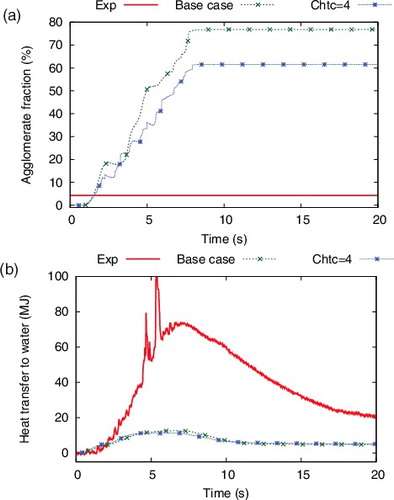
Figure 14. Comparison of the calculated containment pressure with experimental data for ALPHA/GPM. Calculation cases GPM10 and 05: base case, GPM12, 09, and 08: Chtc = 4.
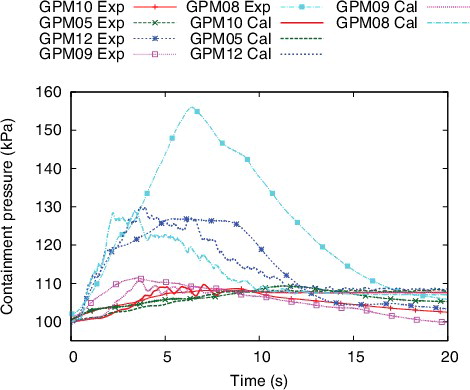
Figure 15. Comparison of calculated particle size distribution with experimental data for ALPHA/GPM. Calculation cases GPM10 and 05: base case, GPM12, 09, and 08: Chtc=4.

Table 4. Summary of conditions and results of selected FARO experiments [Citation13].
Figure 17. FARO L14, L28, and L31: comparison with experimental data on pressure (a), heat exchange (b), and agglomerate fraction (c).
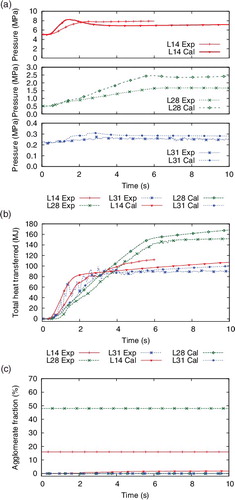
Figure 19. FARO L14, L28, and L31: impact of the modified models on the heat transfer: ‘nlrad-off’ non-local radiation model disabled, ‘mono’ mono-spectrum particle size at mass median diameter, ‘mono, Chtc = 1’ mono-spectrum particle size without heat transfer modification.
